Ideas and options for redeveloping an apartment

The big problem in many cases is the inconvenient, impractical design of the apartment. Often it becomes an obstacle to the implementation of interesting design ideas. There is only one way out in this situation - redevelopment. But it is important to take into account that even an apartment that is owned can only be remodeled in accordance with the standards established by law.



What it is?
The design of any housing is, of course, strictly taking into account the current standards. As far as possible, the developers try to take into account the tastes and needs of potential tenants. But standards change over time, tastes and needs are all the more susceptible to change.
About 50 years ago, settling in an apartment itself was perceived on the verge of a miracle, but now people have become much more picky. And even in a monolithic house, the newest version is often no longer satisfied with much.



It would seem that all that remains is to get down to work (or invite the right specialists), and the problem will be solved. But not everything is so easy and simple, in this matter it is imperative to take into account the existing restrictions.
What is prohibited?
Self-approval of the redevelopment of an apartment is often an adventurous event, and it is worth seeking advice from a design bureau even if you decide to deal with the entire approval process from and to. The specialists of the Architectural and Design Workshop No. 1 will help you draw up the documents and draw up a "route" for the approval so that it goes quickly and painlessly.
The ban invariably includes all those works that can reduce the reliability of an apartment building as a whole or dramatically worsen the situation for other residents. So, you cannot do any work that will reduce or eliminate the ventilation passages; no matter how much you want to place a niche, put a refrigerator or built-in wardrobe, this is unacceptable.
The regulatory authorities will also prohibit an increase in the load on the floor more than indicated in the project. Heavy screed, laying of heavy tiles, installation of very massive furniture, household appliances or equipment are also prohibited.


It is not allowed to move the radiator to any room where by default there is no central heating, both when combining rooms with balconies and loggias, and without it. Moreover, even if the battery is arbitrarily placed in the storeroom or in the corridor where it was not originally there, you will be ordered to dismantle it. The law blocks the receipt of water underfloor heating from common building pipes for hot water supply or heating.


No one will be allowed to move the bath or toilet to the rooms directly under which there are living quarters.
It is not allowed to form rooms less than 9 sq. m, carry out absolutely any redevelopment in houses that in 36 months or sooner will be demolished and resettled. The ban also applies to buildings registered by the civil defense and emergency response authorities.

What can you do?
But a lot can be done according to the current legislation: no one has the right to prohibit the use of any wallpaper, plasters, decorative mixtures.Replacing the flooring with a moderately heavy one, finishing the ceiling, demolishing the mezzanine, dismantling any built-in shelf and creating new ones, moving the electric stove to a new place in the kitchen are also permissible without restrictions.

The same procedure applies to the installation of the air conditioner, provided that the load-bearing wall will not be gouged. But the satellite TV antenna will have to be coordinated in advance.
Moving the plumbing in the kitchen, changing the gas stove to an electric one, disassembling the secondary walls (if they are not designated as load-bearing), punching openings in them and sealing existing holes are permissible, but only with official permission.


To keep abreast of the latest requirements (they may change unexpectedly), check the latest editions of the Housing Code and the laws of your region before starting work. Then the permissible manipulations will be precisely defined and you will not make any mistakes.



Primary requirements
Redevelopment according to the project is the most correct decision. First, a plan is ordered from the BTI, from there it is handed over to the designers registered with the SRO. Design materials and an application for alteration must be brought to the Multifunctional Center, whose employees themselves communicate with the Housing Inspectorate. After changing the layout, an inspector arrives at the site, who checks compliance with the law and other standards. In the absence of violations, you will be given an act of acceptance of the redevelopment.
But it is still not over: the act and the project are carried to the BTI, where they prepare an updated technical passport. If you do not take the last step, commissioning the updated communications is illegal. And subsequently, even the court will not help restore your rights.

How to do it yourself?
There is another option, how to independently prepare a redevelopment without the help of specialized registration firms. This is an agreement with the architect or organization that developed the project for the house. This path is optimal if the design of the load-bearing walls changes. And then step-by-step instructions follow the same points: to the MFC, from there to the housing supervision and, finally, to the inventory bureau.


This solution is optimal if you are going to:
- Move or equip new openings;
- Change the location of kitchens and bathrooms;
- Combine apartments by forming openings or demolishing walls.

In the latter case, they must keep a log of the production of work, prepare acts for hidden work. The redevelopment itself should be carried out under the constant supervision of the designer of the project. Determining whether a wall is load-bearing or not is impossible without special knowledge.
Content of the project
A sketch of future redevelopment can be drawn up independently, but at the same time all measurements and calculations made on their basis are the prerogative of professionals. Other information by the authorities approving the redevelopment will not be accepted at all. The location of the wet zones is shown in the BTI plan (floor by floor) with a dotted line, although other options are also possible.
The placement of kitchens and living spaces should be shown in the same exact manner. When erecting partitions or installing engineering networks without deviating from the requirements of the plan, you can limit yourself to drawing up a sketch and approving it in the Housing Inspectorate.


But in very many cases, it will be impossible to make repairs without changing the original zoning. Then you will still have to draw up an official project with the help of specialized organizations. You can draw up an act of work performed on your own, just do not forget that a representative of the HOA or the management company must sign it.
Even for typical housing projects, the list of alterations can vary quite a bit: someone wants to make a studio, someone wants to move the door to another place, someone wants to enlarge the corridor by using utility rooms, and so on.When submitting an application to the designers, be sure to describe all the desired changes, moving clockwise from the entrance to the apartment. A sample application is usually available from the organization where it will be submitted.

It should be noted in the statements:
- Do you plan to waterproof the floors and walls;
- Will the design and type of floor change;
- How will the glazing of the facade be carried out (it must correspond to a single project).


Any purchased material, even decorative, must be provided with a Rosstandart certificate. If you have to cut the window sill of the wall, you can use only diamond cutters for work, but in no case percussion tools. And one more thing: if the apartment is bought with a mortgage, then it will be necessary to obtain consent from the bank for any manipulations.
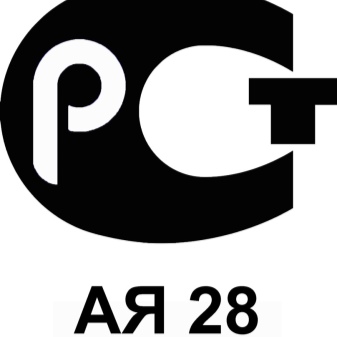

How to legalize?
To agree on the redevelopment in the housing supervision authorities, documents of such a plan are needed:
- Registration certificate for the dwelling;
- A document confirming ownership or a copy of it certified through a notary, or (from 2017) an extract from the state register;
- Application in a special form (its form must be issued in the body that regulates this issue in your region);
- Project and phased work plan.



Redevelopment of even one room is not allowed until you receive written permission from all registered and permanent residents of the apartment. This condition allows you to protect their legal rights and interests. In many old buildings, an additional requirement for redevelopment is the approval of the architectural supervision authorities or in institutions involved in the protection of historical and cultural monuments.
This is the final list of documentation that you must provide for the approval of the project, no other materials can be required from you.

The commission must make a final decision no later than 45 days from the date of receipt of the package of documents (and the date of acceptance itself is fixed with a stamp affixed to the receipt of acceptance). The finished text of the conclusion must be sent to the applicant in three working days.
In case of refusal, the commission has the right to refer only to three circumstances:
- The discrepancy between the project and the plan with the norms of legislation or the basic principles of redevelopment;
- Incompleteness of the submitted package of documents or doubtfulness of the information contained therein;
- Contacting the body that is not authorized to make a decision on the redevelopment of residential premises.

If an unauthorized redevelopment is discovered, or the work is not carried out for which permission was given, or regulatory requirements are not observed, the supervisory commission has the legal right to demand that all alterations be eliminated within some time. Self-redevelopment of housing that does not run counter to the established rules, does not change the overall design of the house, subject to the payment of a fine for arbitrariness, can be officially registered.
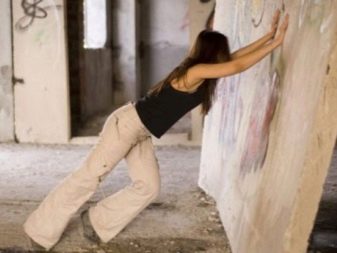

In case of a categorical refusal to return the housing to its original state, it can be seized in court with the payment to the owner of the entire amount received from the auction, with the exception of the costs of legal proceedings. These are the main legal provisions governing redevelopment in the Russian Federation.
How much is it?
But besides legislation, it is worth paying attention to the cost of redevelopment. And it will be special every time, because there are no two identical dwellings, even apparently belonging to the same type, and cannot be. The composition of the plan will also change significantly from this. Moreover, drawing up a project is also a purely individual work and in each case the payment for it is calculated additionally.


The costs of the project are determined by the company that prepares it, because everyone has their own special prices.If you only need to generate design materials and get advice on the next steps when approving it, this is one thing, but if you still want to shift the approval to the contractor, the fee is approximately doubled. Representation in court will be the most expensive. The larger the area of the apartment, the more it differs from standard samples, the more significant the payment will be.

What do you need?
It should be noted that the redevelopment of housing requires the use of strictly defined types of materials. Small architectural forms are often made of reinforced concrete, this option provides sufficient strength and stability of structures. Brick is not capable of providing the same durability, and therefore it is hardly reasonable to make blocks for partitions out of it.

If we are not talking about the main wall, the option with drywall is also not bad - the constructions made from it are light and reliable, they allow you to create the most original design plots. It is also important that it is a dry material that does not leave dirt in the process. A double layer of drywall should be used and the gap between the sheets should be filled with soundproofing material. Most often, cork or mineral wool is used; thermal insulation is not required in most cases.



If any wires and cables are placed in the thickness of the plasterboard partition, they must be in a special corrugation that reliably prevents fire. You will definitely need profiles, fasteners, putty and finishing material. The repair can be completed with decorative finishing using lining, wallpaper; sometimes the rough surface of the walls (partitions) is only painted.

On the plan and in the project, it is especially noted to what type of materials this or that structure, which it was decided to create, belongs to. When choosing, pay attention to the severity of each option, so that the load created on the floor and floors does not exceed the specified in the project of the house.
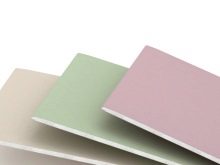


Interesting design ideas: examples and options
Without going beyond the established rules, you can make your apartment much more attractive. The approach depends on the area, the number of rooms and the type of construction of the house.



For one-room
The bulk of orders for the redevelopment of one-room apartments involves the combination of bathrooms in order to increase their area or for a more rational use of space. Redevelopment often includes work on the destruction of storage rooms, built-in wardrobes; other types of services are selected according to the taste and needs of the customer.



Many owners of one-room apartments seek to convert them into two-room apartments by separating the bedrooms. Whether it will be possible to do this depends on the option chosen and the structural features.


In a panel house, the following solutions will be attractive:
- Moving the bathroom doors to another wall;
- Converting a pantry or closet into a walk-in closet;



- Reducing the number of doors in the corridor;
- Dismantling the partition at the entrance to the kitchen and installing another separating the bedroom.
Depending on your preferences and capabilities, glazing and insulation of the balcony is sometimes performed to join it to the room.
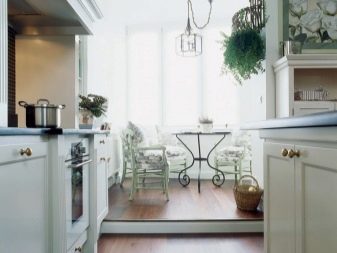

Although "Brezhnevkas" are more comfortable for living than "Khrushchevkas", but there may be their own problems, for example, too long narrow kitchens. The solution can be found here: the partitions that stand between the hallway and the kitchen space are removed, plus a change in the bathroom with the installation of all plumbing and a washing machine in it. The corridor is equipped with a partition that emphasizes the area for the built-in wardrobe.


The living room is separated from the kitchen and dining area by a miniature barrier, the dining area is taken out, spatially continues as if the work surface. Where you can go to the balcony from the former kitchen, a window block is placed.To highlight the bedroom, a plasterboard partition is placed; it is possible to use a translucent sliding system instead. The bedroom itself does not decrease at all, its area is preserved thanks to the insulation and glazing of the loggia.
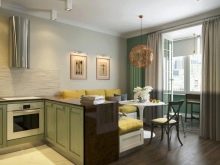


A studio apartment can be converted into a studio. Its radical appearance is when only the sanitary facility is fenced off, and all the other intermediate walls are dismantled. A more acceptable solution, combining a certain privacy and unification of space, are partitions that do not completely block the aisles. To highlight the difference between the kitchen, dining room and living area, you can use different flooring.


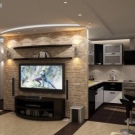


Another way of separation is with tables of great height or bar counters, to which sofas are attached with a back.
The studio is created differently: the partition separating the kitchen from the room is removed, the wall between the corridor and the room is demolished. Only a small barrier that delimits it from the kitchen area reminds of the independence of the hallway. To replace the removed walls at an angle, a new partition is formed, slightly separating the sleeping area.
There is only one way to select the nursery - by placing a transparent partition in the common room to the entire height of the room.



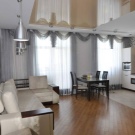


For two-room
Apartments with two rooms can be converted much more varied, there are more opportunities to use your imagination. Many people strive to create an additional room, for example, by dividing the long and narrow room farthest from the entrance into two parts. If you make a non-linear partition, you can put a couple of wardrobes for outerwear at once.






Another way is to increase the volume of the bathroom, occupying part of the corridor space. Since often such a step will not allow entering the kitchen from the hallway, it is necessary to arrange a passage from the living room or common room. An alternative is to leave two rooms, but with the separation of the living and dining areas, making the rooms become children's and adult bedrooms, respectively. A spacious common hall is being formed, where all family members can easily gather. It is noteworthy that in both rooms it will be possible to put a closet.



If the tenants of the kopeck piece want to get three separate parts, they can do otherwise, without even trying to move the bathroom or kitchen. The partition that separates the corridor is removed, two new ones are placed instead of it, delimiting the common space (the partitions installed can be transparent).
A wardrobe is placed in the room farther from the entrance. It is easier and more likely, however, to divide a large room in half, and there are two exits to the balcony.


Redevelopment of a two-room apartment can imply both an expansion of the hallway with the absorption of part of the bathroom, and a reverse move - an increase in the area of the toilet and bathroom with the occupation of a certain space of the hallway. If it is not known why a ledge was left in the room, it would be more correct to combine the bathroom and make the use of space more rational.
Building an apartment by "tram" is a scheme in which you can get from any room to all the others, for the most part such housing is stretched out along one line. Only the room that ends the row is isolated from the others.


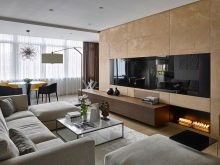
Such a device is very inconvenient when more than two people live in the apartment, because someone will have to settle in a walk-through room or cause constant inconvenience to others. The solution may be to add an entrance to the kitchen from the corner room, while simultaneously combining a bathroom that occupies a fragment of the corridor.

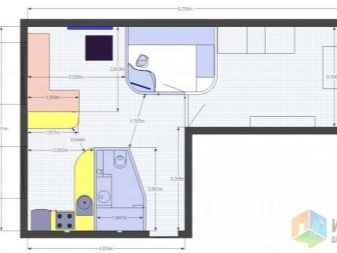
In another scheme, the corner room is equipped with an additional wall that will help separate the corridor. The final segment is equipped with a miniature dressing area, possibly playing the role of a pantry.



It makes sense to place a bedroom and a study in the side rooms, where no one will interfere, for example, working at a computer or watching a movie. For the living room, a standard combination of a sofa, TV and a small table is used. It is undesirable to make a kitchen in a studio format. Often they refuse from a full-fledged table and chairs in favor of transforming solutions as the most compact ones.



The bathroom can be equipped with a boiler and a washing machine, the entrance is made from the corridor. It is advisable to use the balcony not as a living area, but as a place for drying washed clothes and storing them.



By bringing an apartment closer to a linear configuration, you not only increase the comfort of your own life, but you can also increase the usual area by 6-8 square meters. If before redevelopment it was 40-44 sq. m, then after it it will be equal to 48-52 sq. m, which can be considered an excellent result.
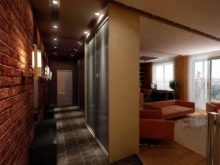


Even worse than the tram, the original layout is a "book", that is, a pair of adjoining rooms that follow immediately after the hallway.


On the right side of the entrance, the builders once organized a kitchen and a sanitary unit. The area is always 41 square meters, no more and no less.

For 3 rooms
Redevelopment of a three-room apartment is rarely subordinate to the purpose of arranging an additional room. Most often, they try to enlarge the bathroom or combine it, to make the use of the available space more efficient. Removing the partition that separates the living room and the hallway, you can embody the most daring design projects in the resulting room.

If you take part of the corridor area and give it to the living room, turning this room into a walk-through, you will get another great solution. The bathroom is also combined and its wall is taken out into the corridor, which will allow this room to be given more space. 60 sq. m, you can further increase the area of \ u200b \ u200bthe kitchen by pushing the door leading into it almost to the same place where the entrance to the bathroom will be. The finishing touch is the demolition of the non-bearing window sill and the installation of sliding glass doors in place of the old window block. On the balconies, you can still put small curbstones to store things that are not afraid of frost and moisture.


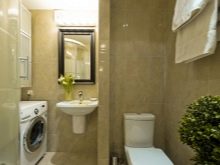
"Vest", they are "butterflies" - a type of "Khrushchev" apartment, which occupy 46 square meters. m. Its peculiarity is the rather large size of the rooms and the impossibility, therefore, to expand the kitchen. The original solution to the problem is to visually combine it with the corridor, without moving the walls. Therefore, all the work is done by design means and the coordination of such manipulations will not be required.


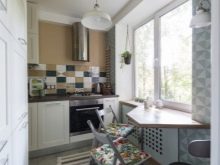
Redevelopment in the "stalinka" is relevant because this housing, although more spacious than built in the following decades, but its structure does not meet the current requirements and tastes. An important advantage of such buildings is the large height of the ceilings and the exclusion of internal load-bearing walls. Therefore, any repairs that do not affect communications and ventilation are almost always coordinated without problems.




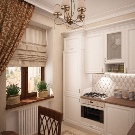
It is not difficult to prepare a two-room apartment from a one-room apartment; you just need to put a decorative partition and merge the kitchen and living room together. At the same time, the connectivity of space and the convenience of its use do not diminish in the least.


A good step is to place the working area on the balcony, provided that there is (or is specially organized) a passage from the living room. The main room is divided into an adult and a children's area (or for two adults, depending on the situation), there is also a place for a TV and a wardrobe.



"Stalinka" can be recommended to be converted into a studio connecting the main and kitchen rooms. If you combine the bathroom at the same time, the space for cooking will immediately increase. The presence of a toilet, a bath and a washbasin in the same room will not seem unnecessarily dense thanks to the high walls.In addition, to increase the visible space of the studio, it helps to hide pipes and other communications inside the walls, to move radiators to hidden places. For zoning, false beams on the ceilings are used.





To emphasize the specific function of each room, it is decorated in suitable colors. So, when you need to add maximum comfort, discreet chocolate and light sand shades, blue and light blue colors will come in handy, their combinations will appeal to young people and all adherents of marine style.


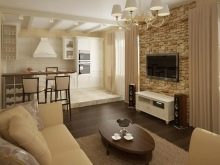
In Stalinist houses, it is better to entrust the transfer and demolition of walls to professionals, because even non-load-bearing partitions are often critically important for holding the floors. It is advisable to combine redevelopment with the elimination of the old creaking floor and replacing it with a new one, more reliable and comfortable.
In a small apartment, it makes sense to separate the kitchen and dining area from all other rooms, this helps prevent the spread of odors into living rooms.
Redevelopment of a communal apartment has a number of important features and nuances, and this is not only obtaining written consent from all owners of other rooms. Most often, they try to combine different rooms into one in order to at least thus increase the available area.


The demolition of walls can be partial, this helps to more clearly zone the space. At the same time, each bedroom must have its own separate window.
Sometimes a relatively large room is divided into two smaller ones, but again, none of them should be less than 9 square meters. m. Another way to improve your living conditions is to increase the illumination in a communal apartment, that is, equip all parts of it with windows or transparent partitions.
If there are two windows in one room, the partition (now not necessarily transparent) can be installed perpendicular to them.
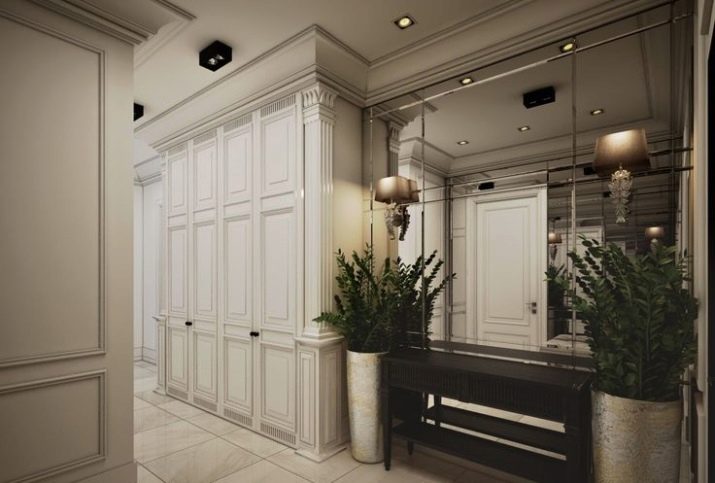



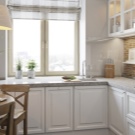
One of the most promising options for household reasons - the formation of a shower cabin and / or a bathroom right in your room - almost always meets legislative obstacles. The 9th floor, as well as the eighth, fifth or tenth, will not work for this in any way, only the first.
It will be difficult to obtain consent to connect the ventilation of an autonomous bathroom to the general ventilation in the house, to lay sewer and water pipes directly in the corridor.


For a four-room apartment
Four-room apartments with an area of 64 sq. m or more is no longer a rarity, therefore redevelopment is often aimed at organizing a second bathroom. Whether it will be possible to do this depends on the technical capabilities. We remind you that you cannot put such a room above the living rooms located below, the inspection will approve your plan only on the condition that there are technical rooms below.


A designer entrusted with the redevelopment of an apartment often has to come up with a solution to get rid of the walk-through rooms. Many tenants are willing to even reduce the overall living space if successful. Therefore, it is quite possible to resort to installing partitions in one of the rooms, which allows you to additionally organize a closet in the fenced off part and bring the configuration of the room closer to the correct square.

Many redevelopments of four-room apartments imply manipulations with the bathroom, for example, they demolish almost all partitions and even remove the door at the entrance to the kitchen. A small fragment of the corridor is absorbed by the sanitary zone, and the passage to the kitchen is made through the living room. Almost always the wall separating them is load-bearing, so you will have to prepare a project and reinforce the partition with metal structures. Determination of load-bearing walls is possible through careful study of documentation and visual inspection of structures, but again, this is best left to professionals.



In the case of the original layout with a trailer, try to bring the configuration of all rooms to a normal square.A couple of rooms can be used as a dining room and a guest room, respectively, do not touch the bedrooms at all. You will need to enter the wardrobe (after fencing it off) through the corridor. The bathroom and toilet in this solution can not be connected together, but the alignment of the walls will still allow to increase their volume. The part of the room that was previously set aside for the corridor must be equipped with reinforced waterproofing.



When insulating a balcony (loggia) and joining it to the living area, it is possible to clean only that part of the wall that was previously occupied by the window. It so happens, unfortunately, that it is impossible to reschedule the space for technical reasons.



Then you have to visually expand the area of the apartment in the following ways:
- Placing decorative plasterboard structures (most often niches, racks and shelves);
- By increasing the width of the openings of doors and windows or by giving them an arched configuration (this way you can add up to ¼ of the area externally);
- The use of sliding doors (such a step is especially promising for walk-through rooms);
- Mirror finish (it adds more originality and sophistication to the decor of the room).





When finishing surfaces, immediately choose the dominant colors, preferably beige or white. They will be an excellent backdrop for bright and expressive decorative elements.
It is undesirable to oversaturate the interior with details, even if there are relatively few of them, but each is thought out as much as possible. Side glossy surfaces can also contribute to the visual expansion of space, but they are not very practical, at least in the corridor.

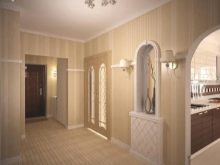

The more light the better; the optimal solution is almost always to use, along with the central chandelier, auxiliary lamps directed to one or another place. It is appropriate to zone apartments converted into studios by organizing small podiums or focusing attention on different parts due to flooring variations. Other good accent moves are the use of decorative fixtures and a variety of colors for wall panels or wallpaper in different places.


When gluing wallpaper, you should definitely prefer small prints, this allows you to further expand the boundaries of the room.
Try to make the ceiling as light as possible. The closer its color is to pure white, the more advantageous the design will be. Multilevel plasterboard ceilings, equipped with additional lamps, seem to be slightly higher than usual. You should not abuse mirrors, because with their excess, instead of expanding the room, a very unpleasant emotional effect is obtained, and it will be much more difficult to care for them.



Professional designers often decorate small rooms with photo wallpaper, consolidating and enhancing the result of redevelopment; but keep in mind that this should be done by specialists, since there are too many subtleties in this process
If redevelopment projects must be adhered to as strictly as possible, then the decoration of the improved space is much freer. You can use the most different, the most original solutions and decorating elements, as long as they fit into the overall concept and allow you to expand the space, raise the ceilings. If in any doubt, consult a specialist immediately.
In this video, you will find a video review with interesting ideas for renovating and transforming an apartment.













The comment was sent successfully.